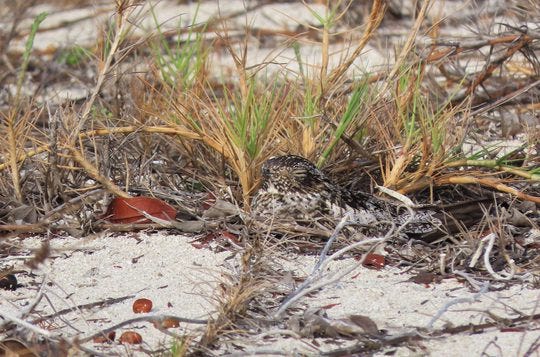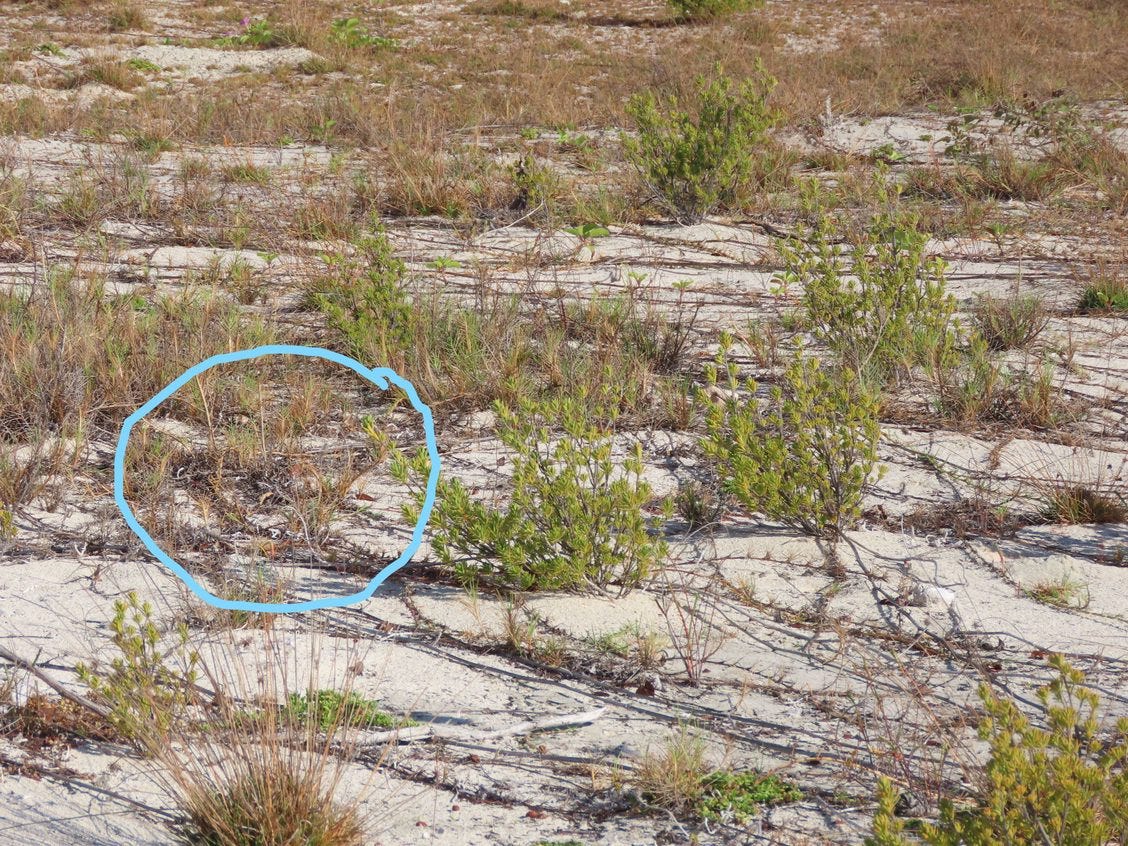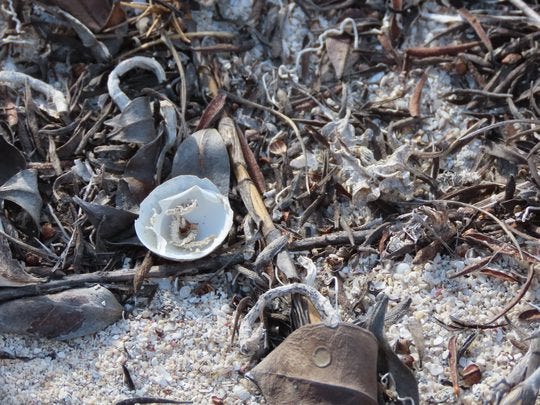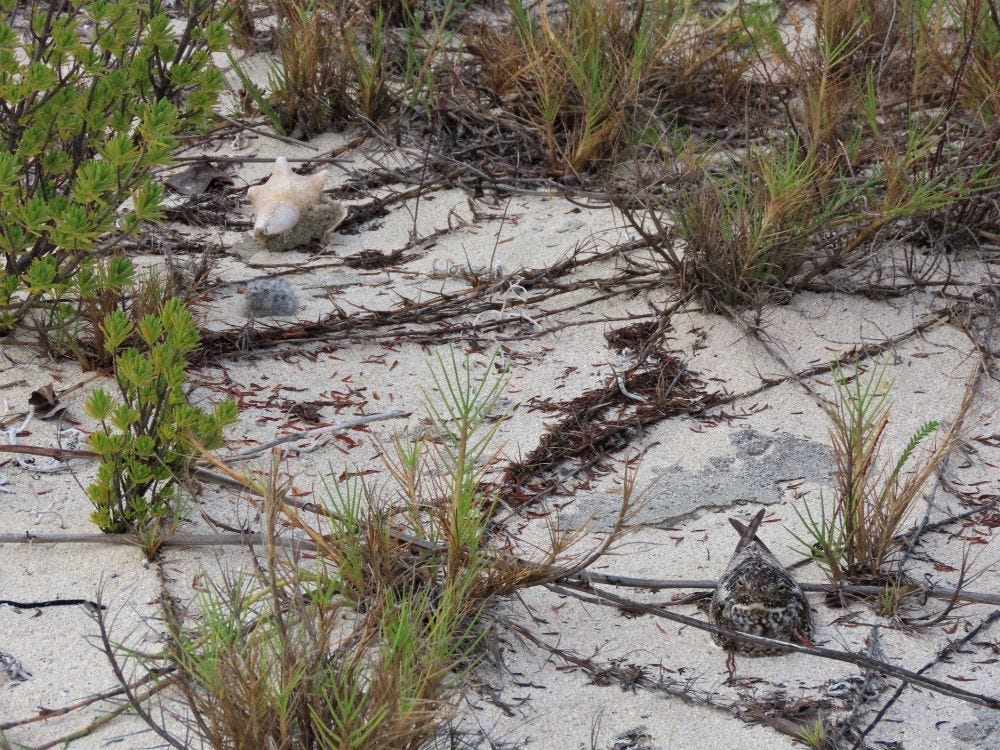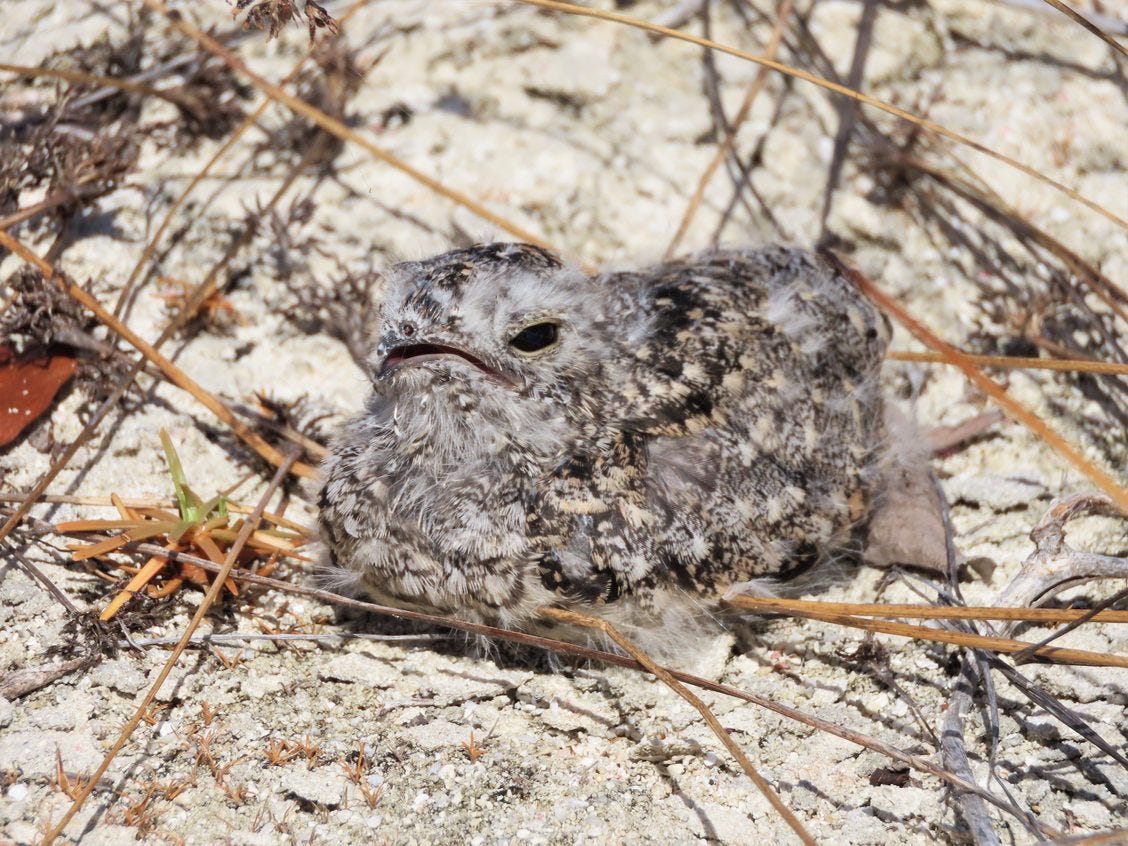This is a post I transferred from my old newsletter platform to Substack so that it is not lost. My apologies if you have read it before or if it did not come over clean. For those of you who missed it, I hope you enjoy it!
The Antillean Nighthawk is considered a breeding visitor to Anguilla. This species enjoys roosting on Road Salt Pond and Merrywing Pond IBA. It is a secretive bird that is often heard rather than seen. The last photographic evidence recorded by Nature Explorers Anguilla was in 2015. All other records were recorded based on the call.
Update 2023: I had several records of this bird in July 2023 in The Valley, Road Bay Salt Pond, and Merrywing Ponds.
Imagine our surprise on May 27, 2021, when one bird flushed on Cove Pond IBA during a routine bird count. Although the photograph is not great, the white wing bars are present. The body shape and distinctive voice gave the species id immediately.
The bird circled the pond several times and headed toward Merrywing Pond, leaving us excited to have seen this species after such a long time.
The bird was seen again on May 28, 2021, while touring with Cap Juluca guests. At this point, we discovered she was protecting a nest with a single egg. We hastily retreated from the site and were happy to see Mom return directly to the nest.
The nest site was well camouflaged in the bush, and the bird blends perfectly with her surroundings.
A review of the available literature revealed little information about the breeding habits of these birds. Following is a summary of what is known.
Breeding occurs from April to August.
They generally lay 1 to 2 eggs, although the 2-egg nest is commonly found in Cuba.
The egg is laid on the ground in gravel or sand.
Incubation is by the female over approximately 19 days.
Once hatched, the chicks are covered in down and move about the nest under the watchful eye of the parents.
Chicks are fed by regurgitation of balls of insects directly into their mouths.
Over the next several days, we continued to monitor the nest and usually found Mom quietly incubating her egg. For the most part, she had her eyes closed and appeared to be asleep. Being a nocturnal species, this is not surprising.
A routine evening check on June 12, 2021, revealed a tiny ball of fluff resting about 1.5 feet from the original nest. Half of the egg was still in the nest, indicating it most likely hatched the same day. With our last visit to the site being on the morning of June 11th, the hatch window was significantly narrowed. Further, the adult would either remove the shell or eat it.
Mom was displaying typical defensive behavior, including flapping her wings and hissing. After a quick photograph, we left the site to give her space and not draw attention to the vulnerable chick.
Upon returning to the site on June 16th, Mom and Chick were doing well. As you can see from the above photo, Mom is in the lower right corner, and her chick is in front of the conch shell. Four days post-incubation, the chick appeared to be growing nicely.
To gain insight into the development of Antillean Nighthawk chicks, we referred to a close “cousin” - the Common Nighthawk. According to Birdsoftheworld.org, the typical fledge time is within 18 days of hatching for this species. One could assume a similar timeframe for the Antillean Nighthawk.
By the 8th day (June 20, 2021), you can see the Nighthawk features beginning to develop on the chick. Even as she is nestled under Mom’s wing, her head looks like mom, and you can see some of the down being replaced by feathers.
Mom continues to be comfortable in her role as protector.
A visit to the site on June 25, 2021 (day 13) revealed our chick with feathers replacing most of the down. Mom had the chick tucked away under a bush about 25 feet from the last location. The chick moved out into the clearing and rested comfortably.
A weather event on Saturday morning kept us from the site. We returned on Sunday, June 27, 2021 - day 15 post-hatch. Unfortunately, there was no sign of the chick or the mother. The absence of adverse events led us to believe that the little one fledged between Friday and Sunday morning.
Perhaps when it emerged from the bush, it was saying a fond farewell. I’m ready to go on my journey!
In a period that has meant uncertainty for so many, this little family was a gift that allowed us to forget for a few weeks. We wish them well as they move on in their journey of life. Each time I walk that pond, I will remember this experience and look forward to their return.







